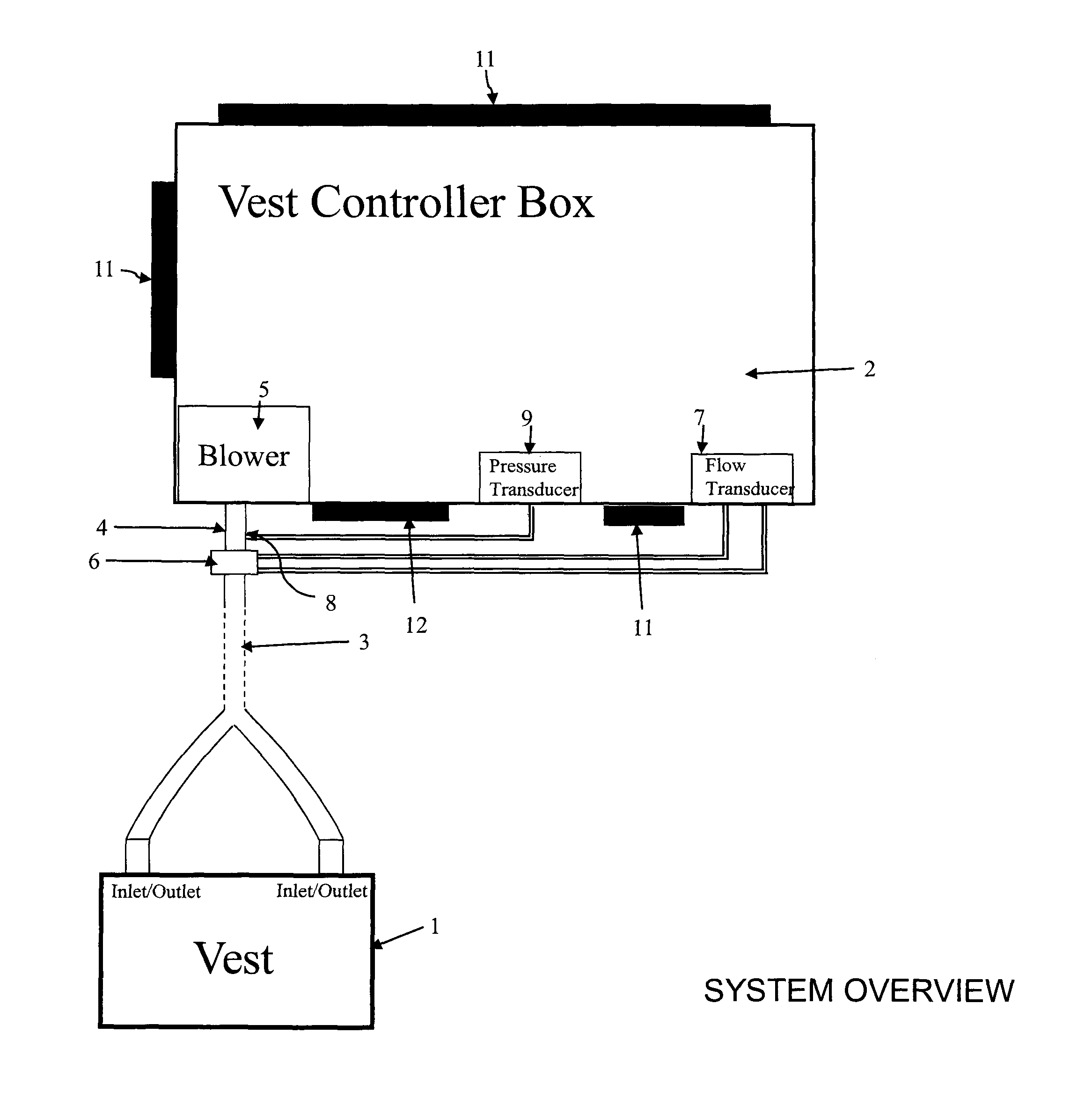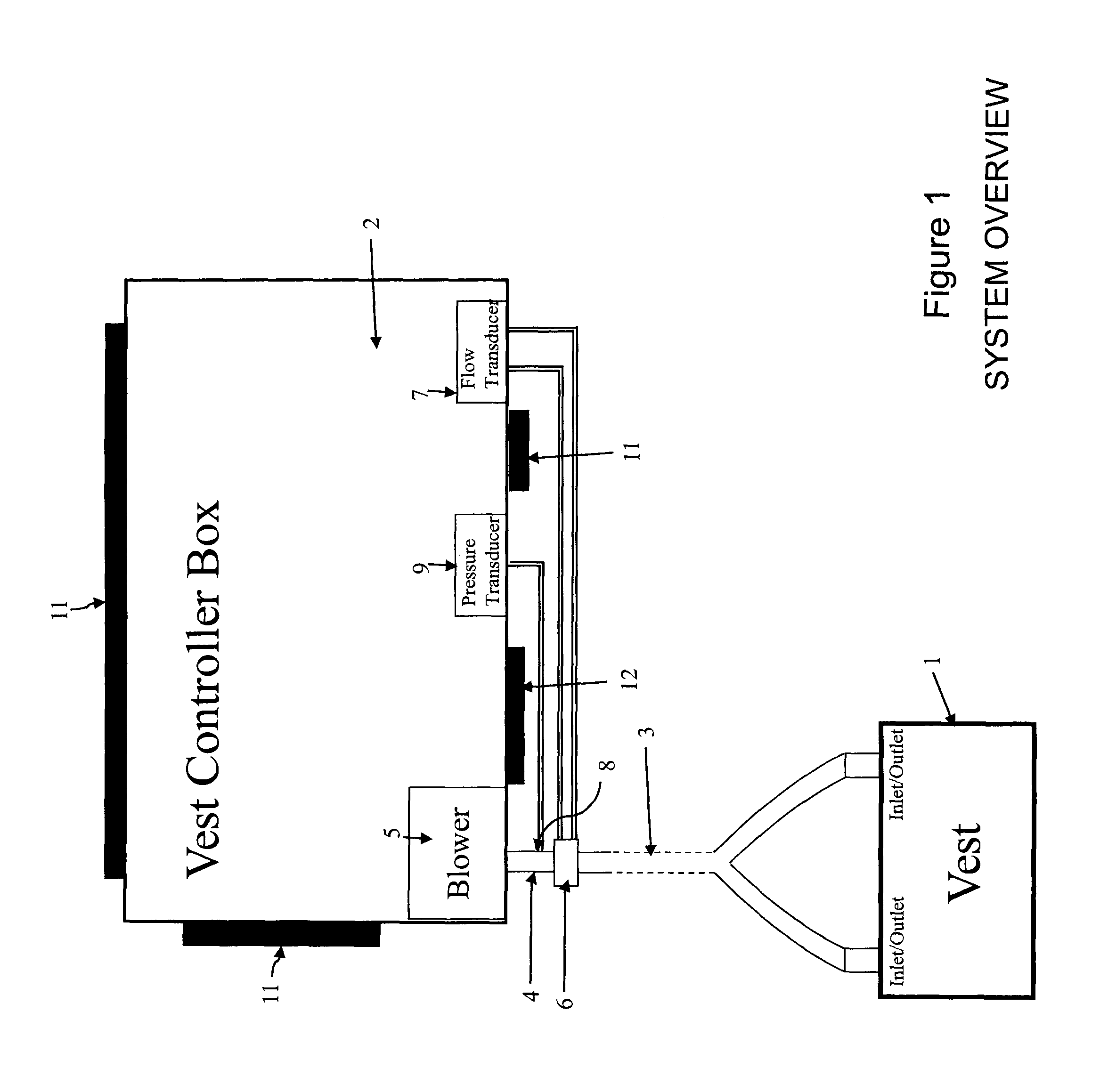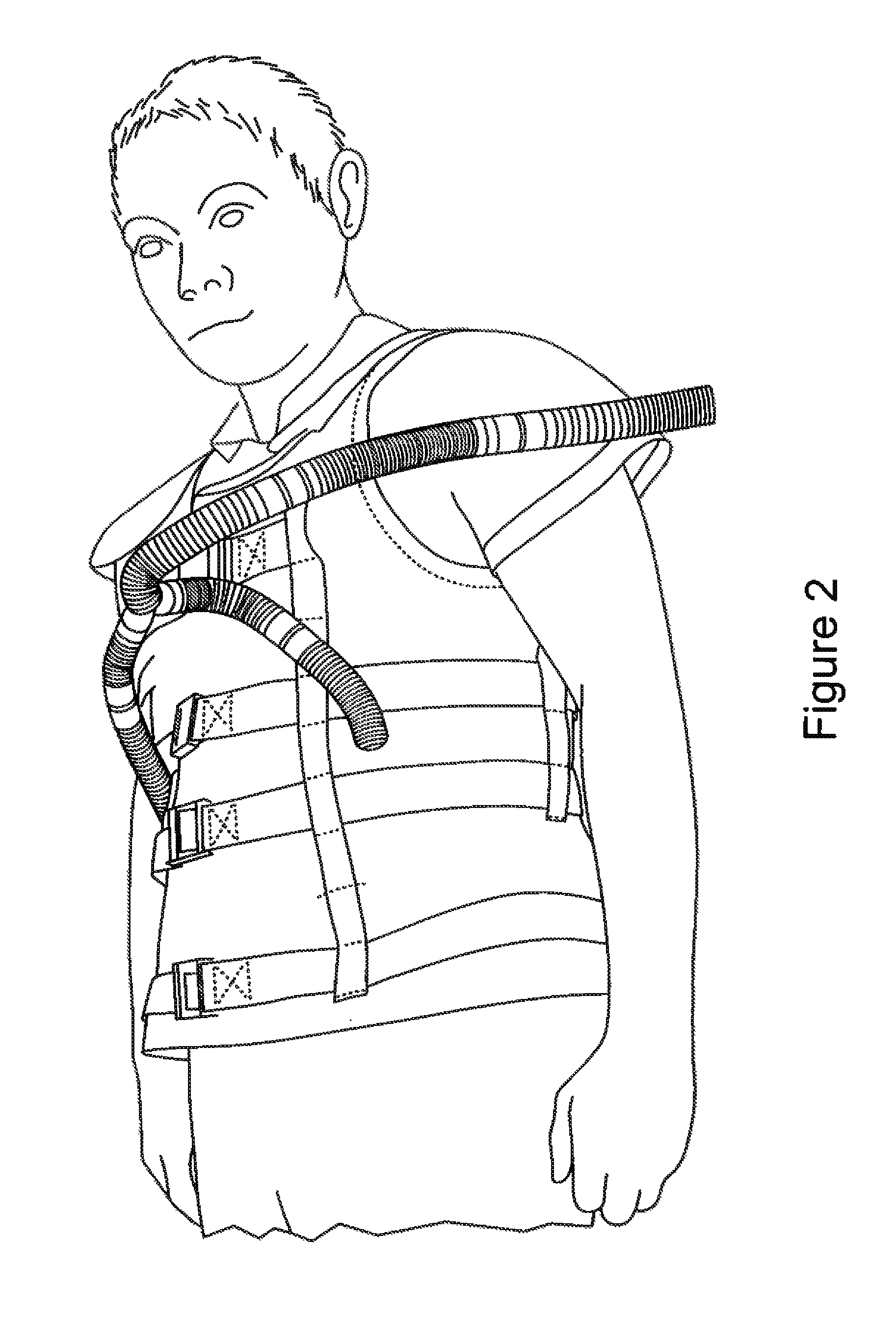Method and device(s) for diagnosis and/or treatment of sleep apnea and related disorders
a technology for sleep apnea and related disorders, applied in the direction of snoring prevention, artificial respiration, sensors, etc., can solve the problems of difficult to distinguish between apnea and hypopnea, inability to quantify, and often unfavorable conditions
- Summary
- Abstract
- Description
- Claims
- Application Information
AI Technical Summary
Benefits of technology
Problems solved by technology
Method used
Image
Examples
Embodiment Construction
[0046]Design:
[0047]An overview of the preferred embodiment is shown in FIG. 1. It is comprised of an inflatable vest, a controller box (2) and flexible tubing (3) to connect the inside lumen of the vest (1) to the output (4) of a blower (5) located inside the Controller Box (2). A suitable flow meter (6) is inserted in the tubing (3) close to the Box (2). While a flow meter of any type can be used, we use a Fleisch pneumotachogram and connect its two ports to the two ports of a differential pressure transducer (7) inside the box. A small port (8) in the tubing (3) is connected to a port of another pressure transducer (9) inside the Box (2) to measure tubing pressure. Although the flow meter (6), pressure port (8) and their connections are located outside the Box (2) in this embodiment, they can optionally be located inside the Box (2). A number of control knobs (11) are located on the front, side and back of the box (FIGS. 7 to 9). Additionally, analog input / output sockets (12) are ...
PUM
 Login to View More
Login to View More Abstract
Description
Claims
Application Information
 Login to View More
Login to View More - R&D
- Intellectual Property
- Life Sciences
- Materials
- Tech Scout
- Unparalleled Data Quality
- Higher Quality Content
- 60% Fewer Hallucinations
Browse by: Latest US Patents, China's latest patents, Technical Efficacy Thesaurus, Application Domain, Technology Topic, Popular Technical Reports.
© 2025 PatSnap. All rights reserved.Legal|Privacy policy|Modern Slavery Act Transparency Statement|Sitemap|About US| Contact US: help@patsnap.com



